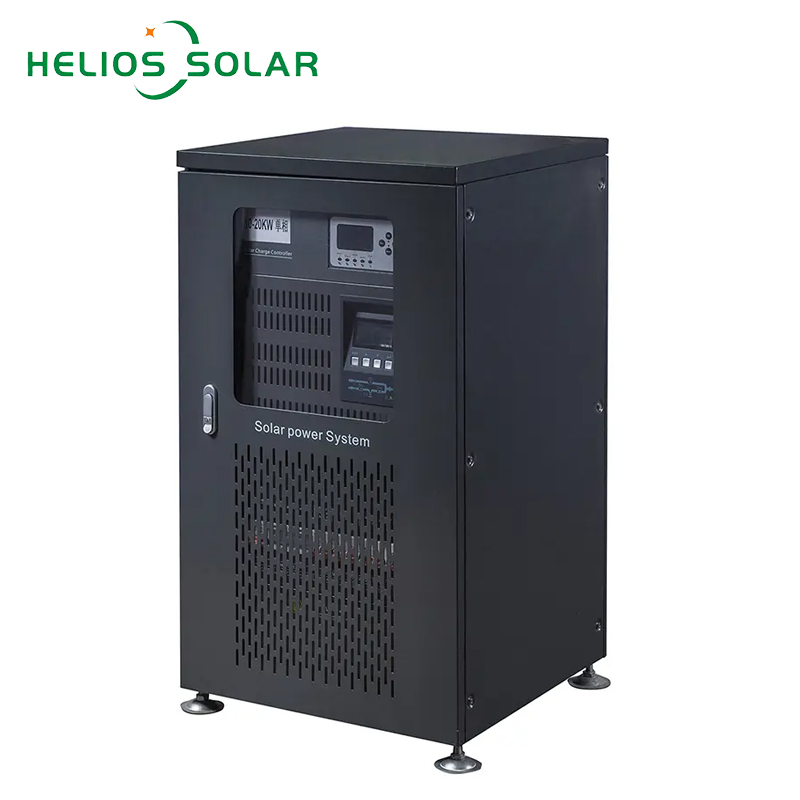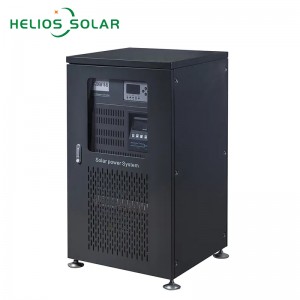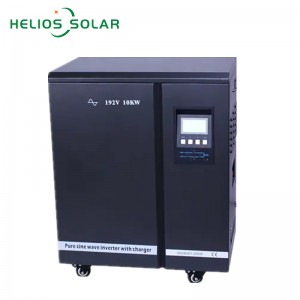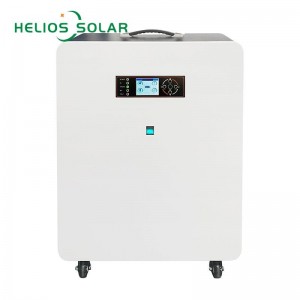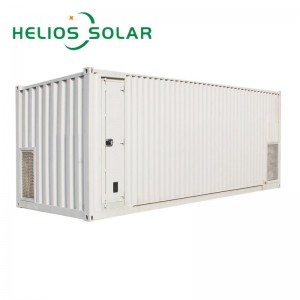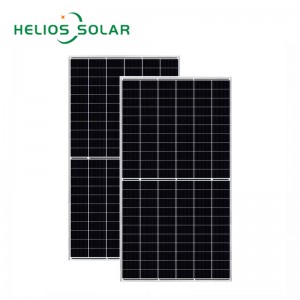
Low Frequency Solar Inverter 10-20kw
Product Parameters
| Type:LFI | 10KW | 15KW | 20KW | |
| Rated Power | 10KW | 15KW | 20W | |
| Battery | Rated Voltage | 96VDC/192VDC/240VDC | 192VDC/240VDC | |
| AC Charge Current | 20A(Max) | |||
| Low Votage Protection | 87VDC/173VDC/216VDC | |||
| AC Input | Voltage Range | 88-132VAC/176-264VAC | ||
| Frequency | 45Hz-65Hz | |||
| Output | Voltage Range | 110VAC/220VAC;±5%(Inversion Mode) | ||
| Frequency | 50/60Hz±1%( Inversion Mode) | |||
| Output Waveform | Pure Sine Wave | |||
| Switching Time | <4ms( Typical Load) | |||
| Efficiency | >88%(100% resistive load) | >91%(100% resistive load) | ||
| Overload | Over load 110-120%,last on 60S enable overload protection; Over load 160%,last on 300ms then protection; |
|||
| Protection Function | Battery over voltage protection, battery under voltage protection, overload protection, short circuit protection, over temperature protection,etc. |
|||
| Ambient Temperature for Operation | -20℃~+50℃ | |||
| Ambient Temperature for Storage | -25℃ - +50℃ | |||
| Operation/Storage Conditions | 0-90% No Condensation | |||
| External dimensions: D*W*H(mm) | 555*368*695 | 655*383*795 | ||
| G.W.(kg) | 110 | 140 | 170 | |
Product Introduction
1.Double CPU intelligent control technology, excellent performance;
2. Solar priority、Grid power priority mode could be set, application flexible;
3.Imported IGBT module driver, inductive load impact resistance is stronger;
4.Charge current/battery type could be set, convenient and practical;
5.Intelligent fan control, safe and reliable;
6.Pure sine wave AC output, and be adapt to all kinds of loads;
7.LCD display equipment parameter in real-time, operation status be clear at a glance;
8.Output overload, short circuit protection, Battery over voltage/low voltage protection, over temperature protection(85℃), AC charge voltage protection;
9. Export wooden case packing, ensure transportation safety.
Working Principle
Solar inverter is also called a power regulator. Generally speaking, the process of converting DC power into AC power is called an inverter, so the circuit that completes the inverter function is also called an inverter circuit. The device that inverts the process is called a solar inverter. As the core of the inverter device, the inverter switch circuit completes the inverter function through the conduction and observation of the electronic switch.
Function Indication
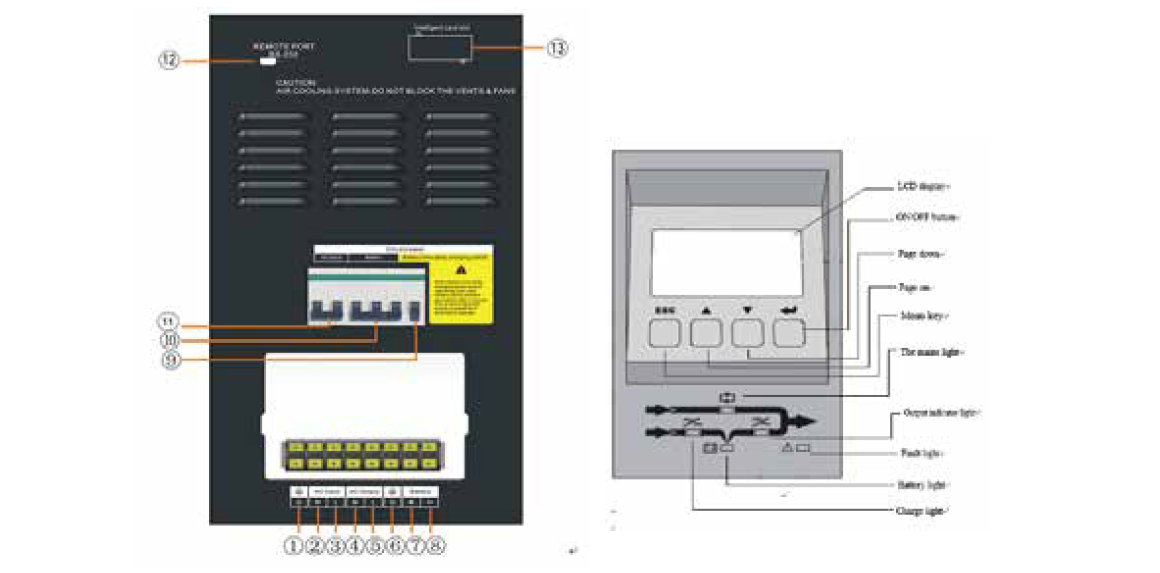
①--- The mains input ground wire
②--- The mains input zero line
③--- The mains input Fire Wire
④--- Output zero line
⑤--- Fire wire output
⑥--- Output ground
⑦--- Battery positive input
⑧--- Battery negative input
⑨--- Battery charging delay switch
⑩--- Battery input switch
⑪--- The mains input switch
⑫--- RS232 communication interface
⑬--- SNMP communication card
Connection Diagram
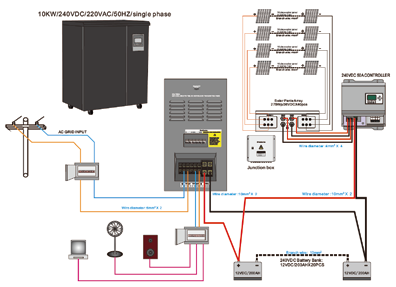
Using Precautions
1. Connect and install the equipment in strict accordance with the requirements of the solar inverter operation and maintenance manual. When installing, carefully check whether the wire diameter meets the requirements, whether the components and terminals are loose during transportation, whether the insulation should be well insulated, and whether the grounding of the system meets the regulations.
2. Operate and use in strict accordance with the provisions of the solar inverter operation and maintenance manual. Especially before turning on the machine, pay attention to whether the input voltage is normal. During operation, pay attention to whether the sequence of switching on and off is correct, and whether the indications of the meters and indicator lights are normal.
3. Solar inverters generally have automatic protection for open circuit, overcurrent, overvoltage, overheating, etc., so when these phenomena occur, there is no need to manually stop the inverter. The protection point of automatic protection is generally set at the factory, and no further adjustment is required.
4. There is high voltage in the Solar inverter cabinet, the operator is generally not allowed to open the cabinet door, and the cabinet door should be locked at ordinary times.
5. When the room temperature exceeds 30°C, heat dissipation and cooling measures should be taken to prevent equipment failure and prolong the service life of the equipment.
Maintenance Precautions
1. Regularly check whether the wiring of each part of the low frequency solar inverter is firm and whether there is any looseness, especially the fan, power module, input terminal, output terminal and grounding should be carefully checked.
2. Once the alarm is shut down, it is not allowed to start up immediately. The cause should be found out and repaired before starting up. The inspection should be carried out in strict accordance with the steps stipulated in the low frequency solar inverter maintenance manual.
3. Operators must be specially trained to be able to judge the cause of general failures and eliminate them, such as skillfully replacing fuses, components and damaged circuit boards. Untrained personnel are not allowed to work and operate the equipment.
4. If an accident that is difficult to eliminate or the cause of the accident is unclear, a detailed record of the accident should be made, and the low frequency solar inverter manufacturer should be notified in time to solve it.
Product Application
The photovoltaic power generation system occupies about 172 square meters of roof area, and is installed on the roof of residential areas. The converted electric energy can beconnected to the Internet and used for household appliances through inverter. And it is suitable for urban high-rise, multi-storey buildings, Liandong villas, rural houses, etc.
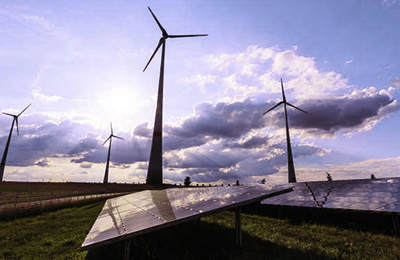
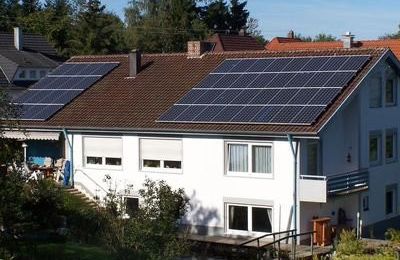
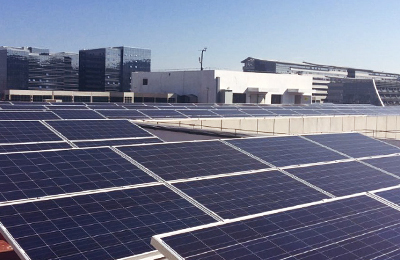
Our Advantages
1. High reliability design
Double conversion design makes the output of the inverter frequency tracking, noise filtering, and low distortion.
2. Strong environmental adaptability
The input frequency range of the inverter is large, which ensures that various fuel generators can work stably.
3. High battery optimization performance
Adopt intelligent battery management technology to prolong the service life of the battery and reduce the frequency of battery maintenance.
Advanced constant voltage charging technology maximizes the activation of the battery, saves charging time and prolongs the service life of the battery.
4. Comprehensive and reliable protection
With power-on self-diagnosis function, it can avoid the risk of failure that may be caused by hidden dangers of the inverter.
5. Efficient IGBT inverter technology (Insulated Gate Bipolar Transistor)
IGBT has good high-speed switching characteristics; it has high voltage and high current operating characteristics; it adopts voltage-type drive and requires only a small control power. The fifth-generation IGBT has a lower saturation voltage drop, and the inverter has higher working efficiency and higher reliability.
Why Choose Us
Q1: What is a solar inverter and why is it important?
A: A solar inverter is an essential part of a solar system and is responsible for converting the direct current (DC) generated by the solar panels into alternating current (AC) that can be used to power home appliances. It ensures efficient use of solar energy and seamless integration with utility grids or off-grid systems.
Q2: Can our inverter adapt to different weather conditions?
A: Yes, our solar inverters are engineered to withstand a variety of weather conditions, including extreme temperatures, humidity, and even partial shade.
Q3: Do our solar inverters contain any safety features?
A: Absolutely. Our solar inverters are designed with several safety features to protect the system and the user. These features include overvoltage and undervoltage protection, short circuit protection, overtemperature protection, and arc fault detection. These built-in safety measures ensure safe and reliable operation of solar inverters throughout their life cycle.

